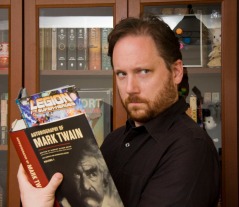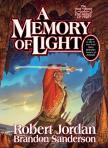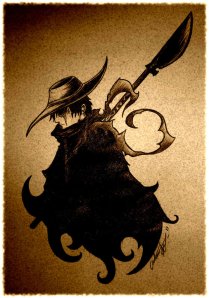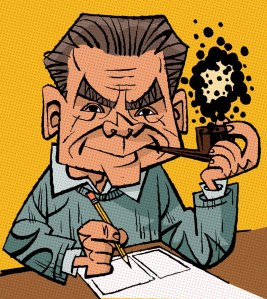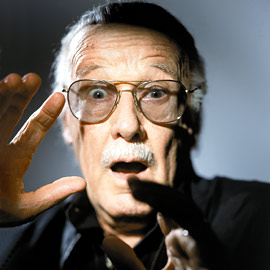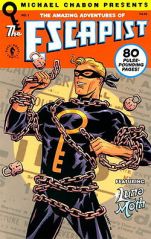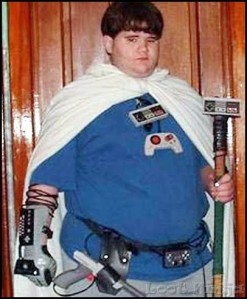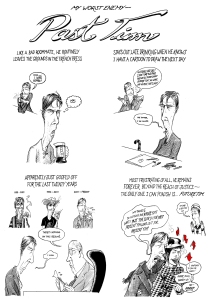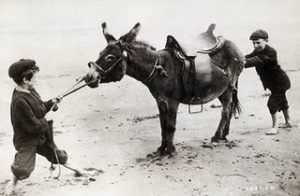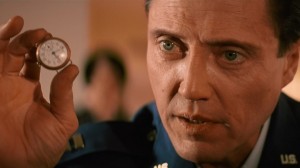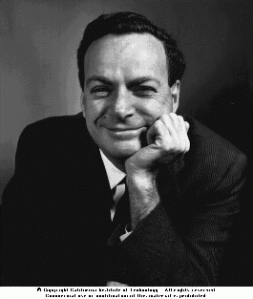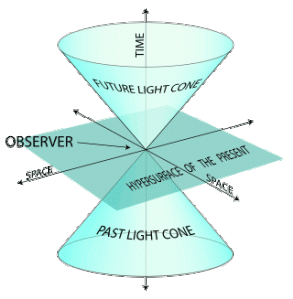 Wheel of Time 12: The Gathering Storm by Robert Jordan and Brandon Sanderson
Wheel of Time 12: The Gathering Storm by Robert Jordan and Brandon Sanderson
Yes, of course there are some spoilers. Fewer than usual, perhaps, but still – do you want to take that chance?
Imagine you have a favorite band, and for one reason or another – accident, death, Yoko Ono – they break up. There will be no more music from them.
But it is decided that, regardless of what fate wants for the band, their music is too well-loved and too important to be allowed to stop. So a new band is formed, and they spend years poring over the original music. They get every recording, every bootleg, every interview about how and why these musical giants did what they did. They collect the original instruments and reproduce how the songs were recorded. They do everything in their power to understand that music as best they can. And then they start to make new music.

No one can ever replace you, Sonny…
When you hear it, you can tell that it’s not the original group – maybe there’s a lyrical choice that the old band wouldn’t have used, or perhaps a certain favoring of chords that’s different – but if you sit back and relax, and let yourself just enjoy the music, you can almost believe that it’s your favorite band, come back together to make new and wonderful music again.
That’s kind of what it was like to read this book.
In his introduction, Sanderson says that he’s not trying to replace Robert Jordan – he’s not going to try and copy Jordan’s style or techniques. “Instead, I’ve adapted my style to be appropriate to the Wheel of Time. My main goal was to stay true to the souls of the characters.” This is certainly evident as you read the book – there are techniques that Sanderson uses that Jordan never did – especially in terms of narrative style, dialogue and thematic unity.
Sanderson is a generation younger than Robert Jordan, and this difference in age is reflected in the style of the book. While he certainly does his best to make it look as much like its predecessors as possible, for Sanderson to simply try to ape Jordan’s style would have been a disaster. The narration seems to have a lot more rhetorical commentary than in previous books – the introductory paragraphs of chapter one are a good example, where the narration itself is commenting on the fallen state of Tar Valon, asking “Where was the White Tower, the law?” This technique of the narrative asking questions of the characters is peppered throughout the book.

Having Mat end every chapter with “YOLO!” was perhaps a little TOO contemporary…
The narration seems a little tighter, more concise than Jordan’s style, which was long criticized for being somewhat superfluous in its verbosity. Again, this is probably a reflection of the generational difference between writers – Jordan probably grew up reading Tolkien, and Sanderson grew up reading Jordan. Each generation seeks to take the good from the previous one, while simultaneously trying to improve upon it. So by and large, the storytelling itself feels more contemporary than other books.
This is also true for the dialogue. There are more rapid-fire exchanges than usual, a sure sign of a younger author, and most of the time this works very well – he actually uses it in a few places to drop significant revelations about characters, so it seems he’s aware of what the quick back-and-forth can do. Each character has retained his or her original voice – with the possible exception of Mat Cauthon.
It became pretty clear as I read this book that Mat must be Sanderson’s favorite character, because he gets all the best lines. One thing that Jordan never did (and I don’t think he really cared to try) was make me laugh. On the other hand, nearly every chapter with Mat in it elicited at the very least an audible chuckle if not an outright laugh. Of all the characters in the book, Mat’s dialogue has become the most unique and, at the same time, the most contemporary, including, but not limited to, verbing a noun:
[Verin] reached into a pocket of her dress, pulling out several pieces of paper. One was the picture of Mat. “You didn’t ask where I got this.”
“You’re Aes Sedai,” Mat said, shrugging. “I figured you… you know, saidared it.”
“Saidared it?” she asked flatly.
He shrugged.
Now for some readers, I have no doubt that this will be an intolerable change in a character’s voice. They’re going to go into paroxysms of rage that their favorite character has been turned into a Buffy guest star. And that’s a valid criticism, I suppose. I loved the change. Mat has always been the most rogueish of the characters, dicing and drinking and flirting, and you would expect that kind of person to be of a sharper form of wit. Sanderson’s decided to let Mat meet that potential, and I applaud him for it.

Even Liam Neeson called to tell Rand to lighten up a little.
By and large, though, the characters mostly sound like themselves. In some cases, more so, if that makes any sense. Rand, for example, is a lot more thoughtful than we’ve seen him before. For a long time, Rand was really a difficult character to get into. We were not often presented with those moments of sympathy that allow you to imagine yourself in that character’s skin, and perhaps that was a conscious choice of Jordan’s. Sanderson’s done a good job at letting us see what being the Dragon Reborn has done to Rand since he left Emond’s Field, and the path to disaster that he’s on. Rand has decided to become hard, as hard as he has to be so that he can live until the Last Battle, and we finally get a good look at why he thinks this is necessary. What’s more, we fear for him – there was one moment near the end of the book where, reading what Rand was about to do, I found myself saying,
out loud, “No. No! Nonononono!” You’ll know it when you see it.
One other aspect of the work that Sanderson has focused on is thematic unity. Different characters experience similar situations that serve to reflect a certain theme of the work. Egwene’s trials, refusing to submit to the will of Elaida, are reflected in Aviendha’s increasingly ridiculous “punishments” by the Wise Ones, and bolstered by the appearance of Shemerin, an Aes Sedai who was, against all tradition, demoted to Accepted. They all serve to support the theme that you are who you say you are, and once you submit to another’s opinion of you, you lose. Egwene already knows it, Aviendha has to learn it, and Shemerin learned it too late.
The difference between being hard and being strong is another theme, this time balanced between Rand and Egwene. Rand, who has to unify the world under him before he fights the Dark One, has chosen to become hard. Not just steel-hard or rock-hard, but cuendillar-hard (a substance from the Age of Legends that is unbreakable by any known means). It is only by crushing his emotions, severing himself from others, and by doing whatever has to be done – up to and including mass murder – that he believes he can prepare for the inevitable confrontation.

Egwene – Keep up the good work! – HC
Egwene, on the other hand, has to unify the White Tower before it’s too late. To do so, she must endure immense physical and emotional punishment at the hands of the very people she’s trying to save. She knows she’s right, of course, and the refusal of others to take her seriously would make it easy for her to just give up on the White Tower Aes Sedai. Leave them to their inevitable doom and build a new society of Aes Sedai loyal to her. But she doesn’t do that. She endures the pain, she controls her anger and her impulses, and constantly reminds herself why she is doing what she’s doing. In the end, this makes Egwene stronger, whereas Rand nearly shatters.
Overall, I was very happy with this book. Like many Wheel of Time fans, Jordan’s death worried me greatly. I worried that the whole story would just never be finished, that Rand would never find peace, the Tower would never be united, that Perrin would never have a quiet place just to be himself or that Mat would never be able to live a life with the responsibilities that he chooses. When Sanderson was announced as the author who would finish the series, I worried again, having never read his work. Would he be able to handle the task of finishing this series? Would he be able to pull together all the plot threads that were flying around and bring us to the conclusion that Jordan had known from the start? Would I, in other words, be utterly heartbroken?
I am very happy to say that I’m not worried anymore.

This was pretty much how I spent most of the book.
—————————————————-
“We can’t go back, Mat. The Wheel has turned, for better or worse. And it will keep turning, as lights die and forests dim, storms call and skies break. Turn it will. The Wheel is not hope, and the Wheel does not care, the Wheel simply is. But so long as it turns, folk may hope, folk may care. For with light that fades, another will eventually grow, and each storm that rages must eventually die. As long as the Wheel turns. As long is it turns….”
– Thom Merrilin, The Gathering Storm
—————————————————-
Robert Jordan at Wikipedia
Robert Jordan at Tor.com
The Gathering Storm at Wikipedia
Wheel of Time at Wikipedia
The Gathering Storm at Amazon.com
Wheel of Time discussion and resources (spoilers galore):
Theoryland
Dragonmount
The Wheel of Time Re-read at Tor.com
The Wheel of Time FAQ
Wheel of Time at TVTropes.com


